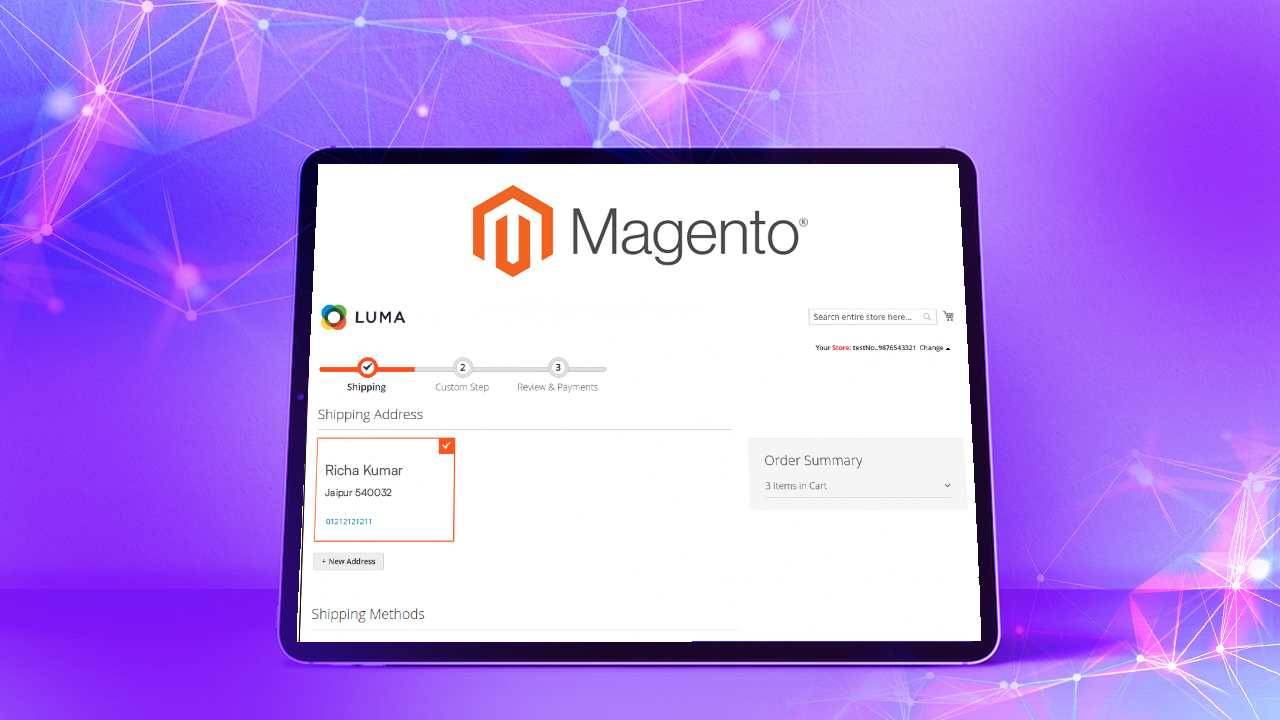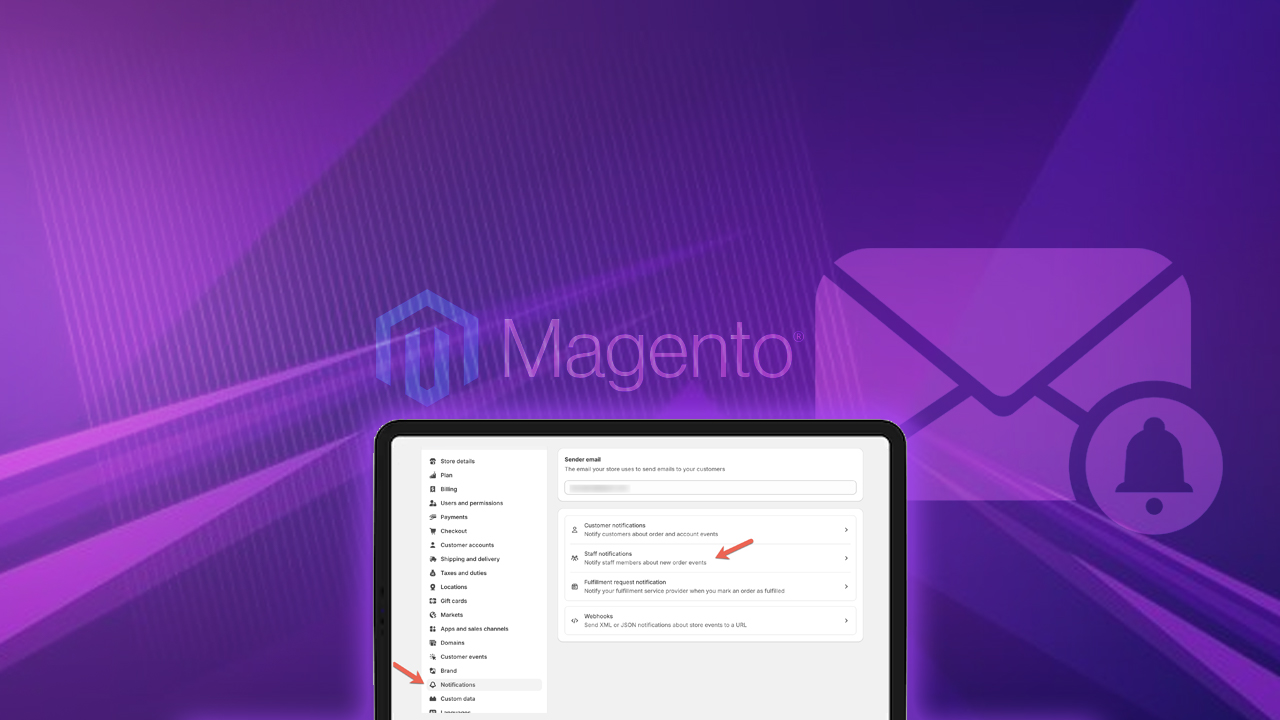Magento 2 is a powerful leading ecommerce platform, but to get the most out of it, you need to pay attention to search engine optimization (SEO). Without proper Magento 2 SEO, your online store may remain hidden in the vast ocean of the internet.
Let’s learn more about Magento 2 SEO settings and techniques to improve your store’s visibility and rankings in search engine results.
ON THIS PAGE
Magento 2 SEO Extension Main and Best Features
Magento 2 is a robust leading ecommerce platform, and optimizing it for search engines is crucial to driving organic traffic and increasing online visibility. Here are the main features you can expect from a Magento 2 SEO extension:
Advanced Meta Tags Management
- Customization of meta titles tags, and descriptions for products, categories, and content pages.
- Ability to automate meta tag generation using templates.
- Integration of keyword optimization suggestions.
Canonical URLs Management
- Implementation of canonical tags to resolve duplicate content issues.
- Control over specifying preferred versions of pages for search engines.
XML Sitemap Generation
- Automatic generation of XML sitemaps for improved crawlability.
- Configurable settings for sitemap frequency and priority.
- Option to include/exclude specific URLs from the sitemap.
HTML Sitemap Creation
- Generation of user-friendly HTML sitemaps to enhance user navigation.
- Improved internal linking and SEO through accessible sitemaps.
Structured Data (Schema Markup) Support
- Configuration of structured data for products, categories, and other content.
- Enhanced visibility in search results with rich snippets.
SEO-Friendly URL Optimization
- Optimization of URLs to be descriptive and keyword-rich.
- Removal of unnecessary symbols and parameters from URLs.
- Management of URL structure for improved SEO.
Robots.txt File Management
- Ability to customize the robots.txt file for controlling search engine crawl behavior.
- Prevent indexing of non-essential or sensitive pages.
Backlink Analysis and Management
- Insights into your site’s backlink profile, including both quality and potentially harmful links.
- Various tools to monitor and disavow harmful backlinks.
Page Speed Optimization
- Integration of tools and features to improve page load times.
- Utilization of browser caching and content delivery networks (CDNs) to boost speed.
Content Quality and Duplicate Content Checks
- Detection and prevention of duplicate content issues.
- Various tools to assess the quality and uniqueness of content.
Recommended Read: Magento Website Development
Enable SEO Module
Ensure that your Magento 2 store has SEO capabilities enabled. Default Magento 2 has an SEO module built-in, but you can enhance its functionality with third-party SEO extensions.
Some popular extensions include the Mageplaza SEO extension and advanced SEO Suite Ultimate extension. These extensions offer additional features and optimization options to boost your SEO efforts.
How to Enable the SEO Module
Enabling the built-in SEO module in Magento 2 is relatively straightforward:
- Log in to your Magento platform admin panel.
- Navigate to Stores in the left-hand menu.
- Under Settings, select Configuration.
- Expand the General section and choose Web.
- Open the Search Engine Optimization tab.
- Set “Use Web Server Rewrites” to “Yes.”
- Save the Configuration.
Remove Duplicate Content Issues
Duplicate content can harm your SEO rankings, as search engines like Google bots penalize websites with multiple pages featuring the same or substantially similar content. To avoid this issue, follow these best practices:
How to Address Duplicate Content in Magento 2
Use Canonical Tags
Canonical tags are HTML elements that specify the preferred version of a page when multiple versions exist.
By adding a canonical tag to each page, you inform search engines which version to index. This helps in avoiding duplicate content issues.
Regularly Audit your Website
Conduct periodic audits to identify and fix duplicate content problems. Use tools like Screaming Frog or Google Search Console to identify duplicate content and address it promptly.
SEO Structured Data Configuration
Structured data, also known as schema markup, helps search engines understand the content of your pages better.
Properly configured structured data can lead to rich snippets in search results, enhancing your click-through rate.
Magento 2 provides options to configure structured data for different products, categories, and more. Make sure you set these up for each relevant page on your site.
How to Configure Structured Data in Magento 2
Here’s how to configure structured data in Magento 2:
- Log in to your default Magento 2 admin panel.
- Navigate to Stores in the left-hand menu.
- Under Settings, select Configuration.
- Expand the Catalog section and choose Catalog.
- Open the Rich Snippets tab.
- Set “Enable Rich Snippets” to “Yes.”
Site Verification for Search Engine Optimization
Verifying your site with major search engines like Google and Bing is a good idea. It allows you to access valuable data about your site’s performance and indexation.
To verify your site, you’ll typically need to add a verification code to your site’s header or a specific HTML file to your server. Each search engine has its own verification process.
How to Verify Your Magento 2 Store with Google Search Console
- Log in to Google Search Console with your Google account.
- Click the “Add Property” button.
- Enter your website URL and click “Continue.”
- Choose the recommended method for verification, which typically involves adding a meta tag to your site’s header.
- Follow the provided instructions to add the meta tag to your site.
- Return to Google Search Console and click “Verify.” If the verification is successful, you’ll gain access to your site’s data.
Read Also: Magento Multi-Store Guide
SEO Tool
Consider using an SEO tool like Google Search Console or Bing Webmaster Tools to improve your SEO template efforts.
These tools provide insights into how search engines perceive your site, identify potential issues, and offer suggestions for improvements.
Why Use SEO Tools or SEO Plugin
Search Performance Monitoring
SEO tools allow you to monitor your site’s performance in search results. You can track your rankings, click-through rates, and the keywords that lead users to your site.
Error Detection
These tools can identify errors and issues on your site that may negatively impact your SEO. For instance, they can flag broken links, crawl errors, and issues with meta tags.
Indexation Insights
You can view the pages indexed by search engines on your site and identify any pages you can exclude from indexing.
Keyword Research
Many SEO tools offer keyword research capabilities, helping you discover relevant keywords to target in your content.
Link Analysis
SEO tools can provide insights into your site’s backlink profile, helping you identify both valuable and potentially harmful links.
Content Suggestions
Some tools offer content suggestions to improve on-page SEO. They can highlight opportunities for optimizing titles, descriptions, and headers.
Using SEO tools in conjunction with Magento 2 built-in features and third-party extensions can significantly boost your SEO efforts.
XML Sitemap and HTML Sitemap Integration
XML sitemaps are essential for helping search engine crawlers navigate your site and discover new content. Magento 2 includes the ability to generate XML sitemaps automatically.
Ensure this feature-rich is enabled and that you’ve submitted your sitemap to Google and other search engines. Additionally, consider including an HTML sitemap for user navigation, which can also benefit SEO.
How to Create and Submit XML Sitemaps in Magento 2
- Log in to your Magento 2 admin panel.
- Navigate to Stores in the left-hand menu.
- Under Settings, select Configuration.
- Expand the Catalog section and choose XML Sitemap.
- Configure the XML sitemap settings, including the frequency of updates, priority, and the number of URLs per file.
- Save the Configuration.
- Generate the XML sitemap by clicking on the “Generation Settings” tab and then “Run Cron” or “Generate.”
- Once the sitemap is generated, submit it to Google Search Console and other search engine webmaster tools.
By creating and submitting XML sitemaps, you provide a clear map of your website’s structure to search engines. This helps search engine crawlers efficiently navigate and index your content.
Why Use HTML Sitemaps
In addition to XML sitemaps, HTML sitemaps can improve user navigation and accessibility. Here are some reasons to include HTML sitemaps:
User-Friendly Navigation
An HTML sitemap serves as a visual directory for users to easily find and access different sections and pages of your website.
Improved User Experience
It can be particularly beneficial for larger ecommerce websites where users may need a straightforward easy way to discover different products and categories.
Enhanced SEO
Search engines recognize the importance of user experience, and providing a well-organized HTML sitemap can indirectly benefit SEO by improving user engagement and satisfaction.
Link Equity Distribution
By including important links in your HTML sitemap, you can distribute link equity to key pages of your site.
To create an HTML sitemap, you can use Magento extensions or manually generate one using HTML code, which can be time-consuming but highly beneficial.
More Magento 2 SEO Extensions for Performance
While Magento 2 offers solid SEO capabilities, you can further enhance your store’s SEO with third-party extensions. Here are a few more Magento product options to consider:
1. Mageplaza SEO Extension
- Features: Mageplaza’s SEO extension offers a comprehensive set of SEO features, including advanced meta tags, canonical URLs, and schema markup. It’s an excellent choice for optimizing your Magento site.
- Benefits: This extension streamlines many SEO tasks and provides easy-to-use features, making it suitable for both novice and experienced Magento users.
2. SEO Suite Ultimate
- Features: Known for its powerful SEO tools, this extension covers everything from optimizing product names and descriptions to improving category page metadata. It’s a versatile solution for boosting your SEO performance.
- Benefits: SEO Suite Ultimate is a robust extension with a wide range of SEO optimization features, making it a valuable addition for stores seeking comprehensive SEO solutions.
3. Magento Short URL Extension
- Features: Short and SEO-friendly URLs can improve user experience and search engine rankings. This extension simplifies the process of creating short and relevant URLs for your products and pages.
- Benefits: Creating short and meaningful URLs helps improve both SEO and user navigation, especially for ecommerce stores with extensive product listings.
4. Internal Links Optimization Extension
- Features: Properly linking between your web pages is not only essential for user navigation but also for SEO. This extension helps you manage and optimize internal links, ensuring a better crawl experience for search engine spiders.
- Benefits: Internal links are a crucial part of on-page SEO. This extension automates the process of optimizing internal links and improving your site’s structure and SEO.
Pioneer Magento SEO Extension
Features
- Enhanced On-Page Optimization: Customize meta titles, descriptions, headers, and URLs for precise SEO control.
- Schema Markup Integration: Implement structured data to display Google Rich Snippets, increasing click-through rates.
- Image Optimization: Compress and optimize product images, improve page load speed, and create descriptive alt tags.
- Clean URL Structures: Generate keyword-rich, user-friendly URLs to enhance SEO.
Benefits:
- Higher Rankings: Improved on-page SEO and schema markup leads to higher search engine rankings.
- Enhanced User Experience: Image optimization and clean URLs result in faster page loading and better navigation.
- Reduced Duplicate Content: Canonical tags prevent duplicate content issues, maintaining search engine visibility.
- Efficient SEO Management: This feature simplifies and automates key SEO tasks, saving time and effort.
Issues with Magento 2 Default Title Tags and Description
Customizing Product Titles and Descriptions:
- Customize your product and category titles and descriptions to be more compelling and keyword-rich.
- Optimize meta tags for better click-through rates in search results.
The Importance of Customized Meta Tags
Customizing your product and category titles and descriptions improves your site’s visibility in search engine results. It also encourages users to click on your listings by providing relevant and appealing information.
How to Add Meta Title & Meta Description for a Product/Category and Content Pages in Magento 2
Adding Meta Titles and Descriptions:
- Create unique and relevant meta titles and descriptions for each product, category, and content page.
- Include targeted keywords to improve search engine rankings and click-through rates.
Benefits of Custom Meta Tags
Custom meta titles and descriptions provide concise information about your pages in search results, attracting users and increasing the chances of a click.
Utilizing keywords in meta tags aligns your content with relevant search queries.
Enabling Search-Friendly URLs in Magento 2
Optimizing URLs:
- Customize your URLs to be descriptive, keyword-rich, and free of unnecessary symbols.
- Avoid lengthy, complex URLs in favor of clean and concise ones.
The Role of SEO-Friendly URLs
SEO-friendly URLs improve both user experience and SEO. They make it easier for users to understand the content of a page and enhance search engine crawlability. A clear URL structure is a fundamental element of good SEO.
Important Points to Check:
Before moving on to the next tips, it’s essential to check the following:
- URL Structure: Ensure your URLs are clean, meaningful, and optimized with relevant keywords.
- Canonical Tags: Confirm that canonical tags are correctly implemented to prevent duplicate content issues.
- Page Speed: Optimize your site’s speed for better SEO and user experience.
- Indexation: Regularly check the indexation status of your pages in search engines.
- User Experience: Continuously improve user experience by enhancing navigation and site structure.
Remove Default Store Code From URL
Removing Store Codes:
- Remove the default store code from your URLs.
- This can be done through Magento’s configuration settings.
The Significance of Removing Store Codes
Default store codes in URLs can make them appear less clean and user-friendly. Removing them ensures that URLs are concise, and present a more professional appearance to users and search engines.
Add a Blog Page to Your Magento 2 Store
Incorporating a Blog:
- Add a blog section to your Magento 2 store to regularly publish SEO-optimized content.
- Target relevant keywords and provide valuable information to your audience.
Benefits of a Blog:
- Organic Traffic: Blogs can attract organic traffic from search engines.
- Increased Authority: Regularly publishing high-quality content enhances your website’s authority in your niche.
- Keyword Targeting: It provides opportunities to target additional keywords.
- Improved SEO: Blogs can indirectly improve your site’s overall SEO by attracting organic traffic and backlinks.
Get Quality Links to Your Store
Building Quality Backlinks:
- Focus on building high-quality backlinks from reputable websites in your industry.
- Avoid low-quality or spammy backlink practices, as quality is more important than quantity.
The Significance of Quality Backlinks
Quality backlinks are a powerful ranking factor in SEO. They demonstrate your site’s authority and relevance to search engines. Prioritize natural, contextually relevant backlinks to maintain a strong backlink profile.
6 Proven Magento 2 SEO Tips
Now, let’s dive into some proven Magento 2 SEO tips to enhance your store’s visibility in search engines. These best practices can help you improve your site’s SEO and attract more potential customers.
1. Duplicate Content Problem for Many Pages
Addressing Duplicate Content:
- Use canonical tags to indicate the preferred version of a page for search engines.
- Regularly conduct site audits to identify and address duplicate content issues.
Why Duplicate Content Matters: Duplicate content can confuse search engines and hinder your site’s rankings. By specifying canonical link URLs and resolving duplicate content, you ensure that search engines index the correct pages and don’t penalize your site.
2. Not-Optimized HTML Sitemap
Optimizing HTML Sitemaps:
- Create an HTML sitemap for improved user navigation and SEO.
- Ensure it includes links to important pages on your site.
The Significance of an HTML Sitemap: An HTML sitemap is a valuable powerful tool or better tool for users and search engines alike. It provides an organized structure for users to explore your site while offering search engine crawlers an additional means to understand your site’s hierarchy.
3. Set Up an XML Sitemap in Magento 2
Configuring XML Sitemaps:
- Enable and configure the XML sitemap feature in Magento 2.
- Submit the sitemap to search engines for better crawlability.
Benefits of XML Sitemaps: XML sitemaps help search engine crawlers efficiently navigate your website. By submitting your sitemap to search engines, you ensure that all your pages are discovered and indexed, improving your site’s visibility.
4. Optimize Product Images
Image Optimization Tips:
- Compress and optimize product images to improve page load times.
- Use descriptive alt tags to help search engines understand image content.
Why Image Optimization Matters: Optimizing product images not only enhances page load speed, a ranking factor in SEO but also ensures that your images are accessible to search engines through descriptive alt tags.
Alt tags improve the understanding of image content and can appear in image search results.
5. Speed Up Your Magento 2 Ecommerce Site
Methods to Improve Page Speed:
- Implement techniques like browser caching and content delivery networks (CDNs) to speed up your site.
- A faster site not only improves SEO but also enhances the user experience.
Page Speed and SEO: Page speed is a critical factor for both SEO and user experience. Search engines prioritize faster-loading websites, and users are more likely to engage with and convert to faster sites. Utilizing browser caching and CDNs can significantly boost your site’s speed.
6. Modify Robots.txt File
Modifying Robots.txt:
- Edit your robots.txt file to control what search engine crawlers can and cannot index.
- Ensure it’s set up correctly to avoid blocking important pages.
The Role of Robots.txt: The robots.txt file guides search engine crawlers by indicating which parts of your site should be crawled and indexed. When correctly configured, it helps prevent unnecessary pages from being indexed, preserving the crawl budget for important content.
Business Information and Social Networks/Profiles for Local SEO
For local businesses, optimizing for local SEO is crucial. Ensure that your store’s contact information, such as address, phone number, and hours of operation, is accurate and up-to-date. Additionally, link your social media profiles to your website. This not only helps with local SEO but also builds trust with potential customers.
Local SEO Optimization Tips for Magento 2
Consistent NAP Information
NAP stands for Name, Address, and Phone Number. Ensure that your business’s NAP information is consistent across all online platforms, including your website, Google My Business, and other local directories.
Google My Business
Claim and optimize your Google My Business listing. Complete all the required information, including your address, phone number, business hours, and images. Encourage satisfied customers to leave reviews.
Local Citations
Ensure your business is listed in online local directories and websites. This includes Yelp, Yellow Pages, and industry-specific directories. Consistency in your NAP information is key.
Location Pages
If your business has multiple locations, create dedicated location pages on your website. Include unique content for each location, along with the respective NAP information.
Local Keywords
Use local keywords in your content, meta tags, and descriptions. For example, if you run a pizza restaurant in New York, use phrases like “best pizza in New York” in your content.
By implementing these local SEO tips, you can enhance your online visibility and attract more local customers to your Magento 2 store.
Conclusion
Leveraging an all-in-one Adobe Commerce SEO toolkit can streamline your efforts and provide comprehensive SEO solutions. Additionally, flexible pricing schemes and offerings like the inclusion of a gift card option can be part of your SEO strategy to attract and retain customers.
By implementing the tips and practices discussed in this blog, you can significantly enhance your online store’s visibility and performance in search engine rankings.
Remember that SEO is an ongoing effort, so stay up-to-date with the latest trends and algorithm changes to maintain and improve your SEO strategy.
Utilizing Google Analytics is essential for tracking your SEO performance while optimizing your checkout page delivery and streamlining the Magento shipping system to ensure a seamless customer experience. Handling product variations effectively is key to capturing a wider audience.
As search engines evolve and customer behavior changes, adapting and optimizing your SEO strategy will ensure your Magento 2 store remains competitive and continues to attract organic traffic.
Stay informed about the latest developments and best practices to ensure that your Magento 2 store remains competitive and continues to attract organic traffic, offering a user-friendly experience while implementing these advanced SEO techniques and strategies.
FAQ
1. What are the key SEO elements to focus on for a Magento store and how can a store owner optimize them?
When optimizing a Magento store for a search result page, the store owner needs to focus on various elements such as meta titles, meta descriptions, clean URL structures, product descriptions, image alt tags, and content quality.
Additionally, consider site speed, mobile-friendliness, and backlink building for a comprehensive SEO strategy.
2. How can I create SEO-friendly URLs for product pages in Magento and what role do product URLs play in SEO?
To create SEO-friendly URLs in Magento, you can configure your URL structure through the admin panel. Ensure that URLs are descriptive, concise, and include relevant target keywords.
Avoid symbols and numbers that do not add value to the URL. Well-optimized product URLs are crucial for on-page SEO.
3. What is the significance of on-page optimization in Magento SEO, and how does it benefit store owners and their ecommerce websites?
On-page optimization in Magento SEO involves optimizing individual pages for search engines. This includes creating unique meta titles and descriptions, incorporating relevant target keywords, optimizing headers and content, and improving user experience.
On-page optimization is crucial for achieving higher search engine rankings and benefiting store owners by attracting organic traffic.
4. How can I set up a blog on my Magento-based store for SEO benefits and what role do CMS pages play in content management?
To add a blog to your Magento store, you can use blogging extensions or integrate a content management system (CMS) like WordPress.
Regularly publishing SEO-optimized blog posts on relevant topics can attract organic traffic, improve search engine rankings, and engage your audience.
CMS pages play a vital role in content management and creating SEO-friendly content.
5. What is the importance of a Magento SEO checklist, and how can store owners create one to ensure proper SEO techniques are followed, including the implementation of Create Permanent Redirect?
A Magento SEO guide or checklist serves as a systematic guide to ensure all essential SEO elements are properly configured and maintained in your store. To create one, list down critical SEO tasks, including on-page optimization, URL structure, image optimization, and site speed.
Regularly review and update your checklist to keep your SEO efforts on track. It’s also important to implement techniques like Create Permanent Redirect to ensure a seamless user experience and avoid broken links.
6. Are there any must-have Magento SEO extensions to enhance my store’s performance, and how can store owners enable submission of these extensions?
Several Magento SEO extensions are available to enhance your store’s performance. Some popular choices include Mageplaza SEO Extension, advanced SEO Suite Ultimate extension, and SEO Suite by Amasty.
These extensions offer a wide range of features to automate and improve various aspects of SEO. To enable the submission of these extensions, store owners can typically do so through the Magento admin panel.
7. How can I implement schema markup on my Magento website for better search engine visibility and enhanced SEO, and how does it help with SEO world and Google Rich Snippets?
Implementing schema markup in Magento involves adding structured data to your website to help search engines understand the content better.
You can use online schema markup generators to create code snippets for various elements such as products, reviews, events, and more.
Once generated, add the code to the appropriate pages on your Magento store to improve Google search results and potentially trigger rich snippets in search results. This not only benefits SEO but also contributes to a better user experience in the SEO world.
Google Rich Snippets can make your listings more appealing in search results and potentially increase click-through rates.






